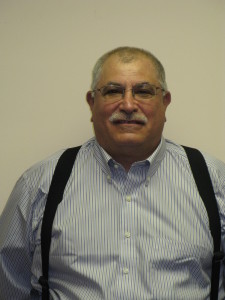Air Date: 9-12-2014| Episode: 339
Last week the Z-man discussed some basics of fire, smoke, soot and fire odor control. This week we go into more detail on cleaning and have some surprises for listeners…
Full Description:
Last week the Z-man discussed some basics of fire, smoke, soot and fire odor control. This week we go into more detail on cleaning and have some surprises for listeners. This all started after the Z-man spoke during the Healthy Building Professional Summit, his presentation “An Indoor Environmental Professionals Guide to Fire Damage Restoration” was a big hit. He opened a lot of people’s eyes and reminded us that he was a pioneer in the fire restoration world. After reviewing our archives we realized he had never been interviewed on this issue and so here we are.
Mr. Zlotnik is a 40 year veteran of the cleaning and restoration industry and President Emeritus of Microban Systems. Cliff is often times referred to as the Godfather of the disaster restoration industry and was a pioneer in development of cleaning products, equipment and techniques for the industry. He has been awarded numerous industry awards and served as an officer and member of the Board of Directors for many industry associations. He is also Co-host of IAQ Radio and a partner in IAQ Training Institute, LLC. He is known for thinking outside of the box and not being afraid to shake things up and challenge the status quo.
Cliff also founded the Unsmoke line of fire restoration products and pioneered many of the fire restoration techniques used to this day. He has always had a passion for fire related issues and feels that fire restoration doesn’t get enough respect.
Z-Man’s Blog:
Surprise, Surprise, Surprise
In an old episode of his TV series Gomer Pyle, USMC, Jim Nabors immortalized the words surprise, surprise, surprise. When I read today’s show invitation and saw the mention of a few surprises, I thought that was you the audience who was going to be surprised. I was the one who was very pleasantly surprised when I got to speak with IAQradio’s original “cyber jockey” my son Zack along with old friends and industry colleagues Lee Pemberton and Pete Consigli.
More technical stuff:
- Post remediation verification. Unlike the post remediation verification sampling done on mold remediation projects performed by a microscopist in a lab, on fire restoration projects what the customer sees and smells is often the clearance criteria. By showing the customer the extent of the problem and then allowing them to visually and olfactorily monitor the corrective action. Microscopy may be used to determine whether or not residue is fire related.
- Lesson learned. On one of my early fire restoration projects the customer didn’t pay me and when we sued them in small claims court they claimed dissatisfaction, having no way to prove otherwise I lost. From then on I used a daily work order which outlined the tasks to be done, the order in which they are to be accomplished and a place for customer to signoff. Have customer inspect work and sign off daily that tasks have been performed to their satisfaction.
- Use of the word “clean” can be problematic when the client has high expectations and some surfaces such as smoke damaged painted walls don’t have an acceptable appearance after processing. Just as washing our clothes may not remove permanent stains; its indisputable that the clothes went through the process.
- Filtration soiling is caused when airborne particulate accumulates on carpet fibers in areas with a concentrated flow of air over or under the carpet.
Opinions:
I opine that all organizations of size and significance should have a historian, because “those who cannot remember the past are condemned to repeat it.”
IICRCA “Council of Associations” is a group trying to work together to unify the industry. The group started with a clean piece of paper and isn’t burdened down by outdated policies.
Government regulations can be good and bad. I opine that our country would be better off if we had less governmental regulation rather than more. Attributing his respiratory problems to his occupational exposure to perchloroethylene as a drycleaner, Lee Pemberton opined that government regulation of the dry cleaning industry has been a good thing.
My experience has proven to me that the best way to teach technical skills to adult learners is through hands-on training.
As fire restoration encompasses a broad range of subject matter, instructors teaching fire restoration need significant field experience.
For students receiving too much technical information too fast is overwhelming. While sometimes omitting important fundamentals, too much time is wasted learning pseudoscience and complex jargon.
Our industry standards and training courses cannot possibly address all contingencies.
Does the content of our industry standards and training courses really fit the onsite realities?
Inaccuracies and misinformation have found their way into industry training courses and industry standards which get parroted and trained to employees, insurance companies and 3rd party administrators.
I opine that prescriptive best practice industry standards have driven up the cost of water damage restoration and mold remediation work for consumers. Unnecessary work is done because contractors want to avoid negligence lawsuits. Profits are being driven down as 3rd party administrators and adjusters from remote locations are using industry standards against contractors by dictating how much rental equipment is needed and the rental period. The contractor should decide the best way to dry the building not the standard.
Today’s music: “Fire in the House”, by the Smithton Outpouring
Z-man signing off







